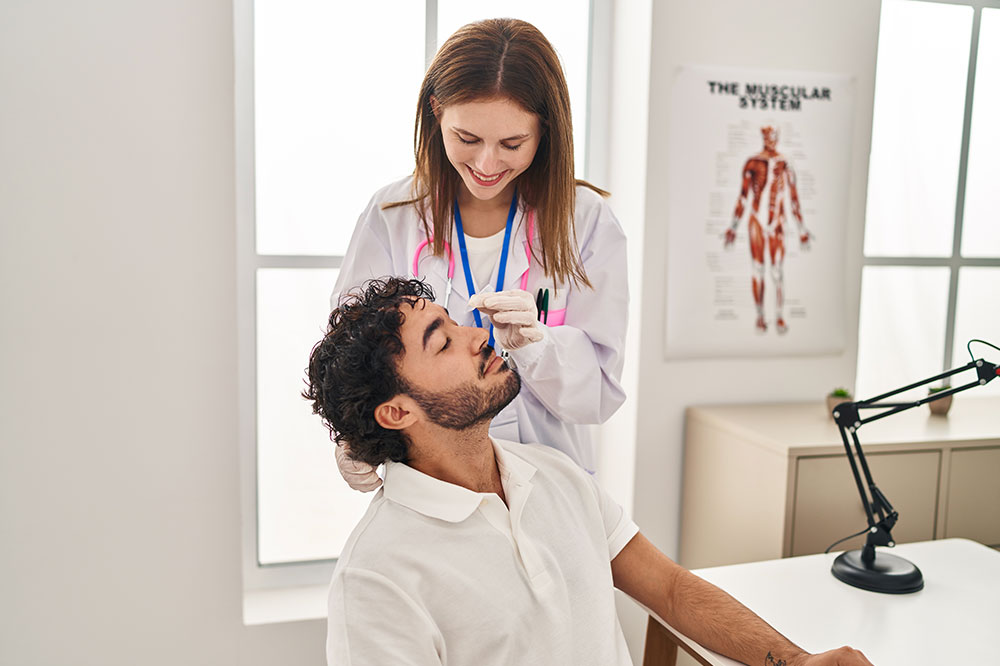Symptoms, management options, and home remedies for dry eyes

The tears secreted by the eye are a combination of mucus, oils, water, and antibodies. This mixture helps lubricate and moisturize the eye. Moreover, tears help provide proteins to keep eye infections away. But sometimes, the organ cannot secrete sufficient tears, which results in complications that may affect one’s daily lifestyle. As for those who are affected with dry eyes, studies show that between 16 million to about 49 million individuals in the country have the condition.
Symptoms
The symptoms of dry eyes affect each person differently. Here are some of the most common symptoms of the health condition.
Excessive tearing.
A feeling of grit in the eyes.
Sensitivity of the eyes to smoke and wind.
Blurred vision as the day comes to a close.
Discomfort when wearing contact lenses.
Trouble keeping the eyes open for a prolonged time.
Seeing double vision.
String-like mucus formations around or in the eyes.
Experiencing stinging or burning sensations.
Redness or soreness.
Fatigue of the eyes after reading even for a short time.
Sticky eyelids, especially when the individual wakes up.
Excessive pain in the eyes is a common trigger of anxiety. The pain can also negatively affect the person’s ability to perform daily activities.
Treatment options
After a healthcare professional diagnoses dry eyes, they may recommend treatment options to help one better manage the condition. The professional may suggest prescriptions to restore or maintain specific levels of tear production. The treatments are also focused on reducing dryness and discomfort in the eyes while improving the organs’ overall health. Furthermore, the treatment for dry eyes may involve adding or conserving tears with the help of prescriptions. Other options may aim to treat potential causes and triggers of dry eyes or increase the production of tears.
Here are a few treatment options from healthcare professionals recommended for various dry eye complications.
Xiidra (lifitegrast ophthalmic solution) 5%
Xiidra is an eye drop that is medically recommended to manage the signs and symptoms of dry eye disease. The eye drop may help address and curb a source of inflammation responsible for dry eye symptoms by increasing tear production in the eyes. Patients must instill one drop of the solution twice daily at 12-hour intervals. Studies show that Xiidra has helped relieve symptoms in patients within two weeks. Before using the prescription, patients must remove any contact lenses. They should wait at least 15 minutes before wearing the lenses again.
RESTASIS® (cyclosporine ophthalmic emulsion) 0.05%
The cyclosporine ophthalmic emulsion prescription is indicated to help increase tears in patients with Chronic Dry Eye where tear production is suppressed. The low tear count may result from a condition known as ocular inflammation associated with keratoconjunctivitis sicca. Restasis drops must be instilled twice a day and at approximately 12 hours intervals. It can also be combined with lubricant eye drops as long as a 15 minutes interval is maintained between both products.
Tyrvaya (varenicline solution)
Tyrvaya is a nasal spray designed to treat the signs and symptoms of dry eye disease. There are glands and cells around the eyes that work in unison to produce a tear film. Moreover, the glands and cells are linked to a nerve inside the nose, which controls tear production. When a patient sprays Tyrvaya into their nose, its formula is said to activate the pathways and help produce more of their natural tear film.
Other treatment options
Other procedures may also help treat dry eyes. These methods are generally recommended and implemented by a trained healthcare professional. These options include using the following:
Tiny silicone plugs to close partially or completely close the tear ducts to prevent tear drainage.
Special contacts such as scleral lenses or bandage lenses. These options help protect the surface of the eyes and trap moisture.
Thermal pulsation device to unclog oil glands and improve tear production. The complete benefits of this method are yet to be determined.
Intense-pulsed light therapy followed by a massage of the eyelids to improve symptoms in those with severe dry eyes.
Home remedies
Apart from the treatment options, following a few home remedies can go a long way in improving one’s symptoms.
Warm compresses
When eyes get inflamed and flaky, they may clog the oil-producing glands on the edges of the eyelids, which can lead to dry eyes. As a workaround, one can wet a clean washcloth with warm water, wring it out, and place it on the affected region for about a minute. Following this, the individual should gently press the edge of the eyelid with their finger to help squeeze out the clogged oils in the glands. Doing this on a daily basis will help lower inflammation and improve the condition.
Hydrate
Drinking water is essential for multiple organs in the body, including the eyes. Consuming about eight to ten glasses of water per day can help keep the eyes moist and prevent dehydration. However, one should skip or reduce the consumption of caffeinated drinks as it may lead to dehydration and impact overall eye health.
Wash-crusted lashes
Crusted lashes may lead to inflammation and irritation in those with dry eyes. So one should clean their eyelids and the surrounding skin to curb inflammation levels. Using baby shampoo or mild soaps can also help clean the lashes without burning sensations.
Eat healthy foods
The food one eats can also improve overall eye health. Fish like salmon and sardines and seeds like flax seeds and sunflower seeds are rich in omega-3 fatty acids, which help reduce inflammation of the oil-secreting glands. Spinach and kale are abundant in vitamin C, an antioxidant to improve eye health. One should also eat chickpeas, black-eyed peas, and kidney beans as they contain folate and zinc, known to improve melanin production, which helps protect the eyes from damage.



